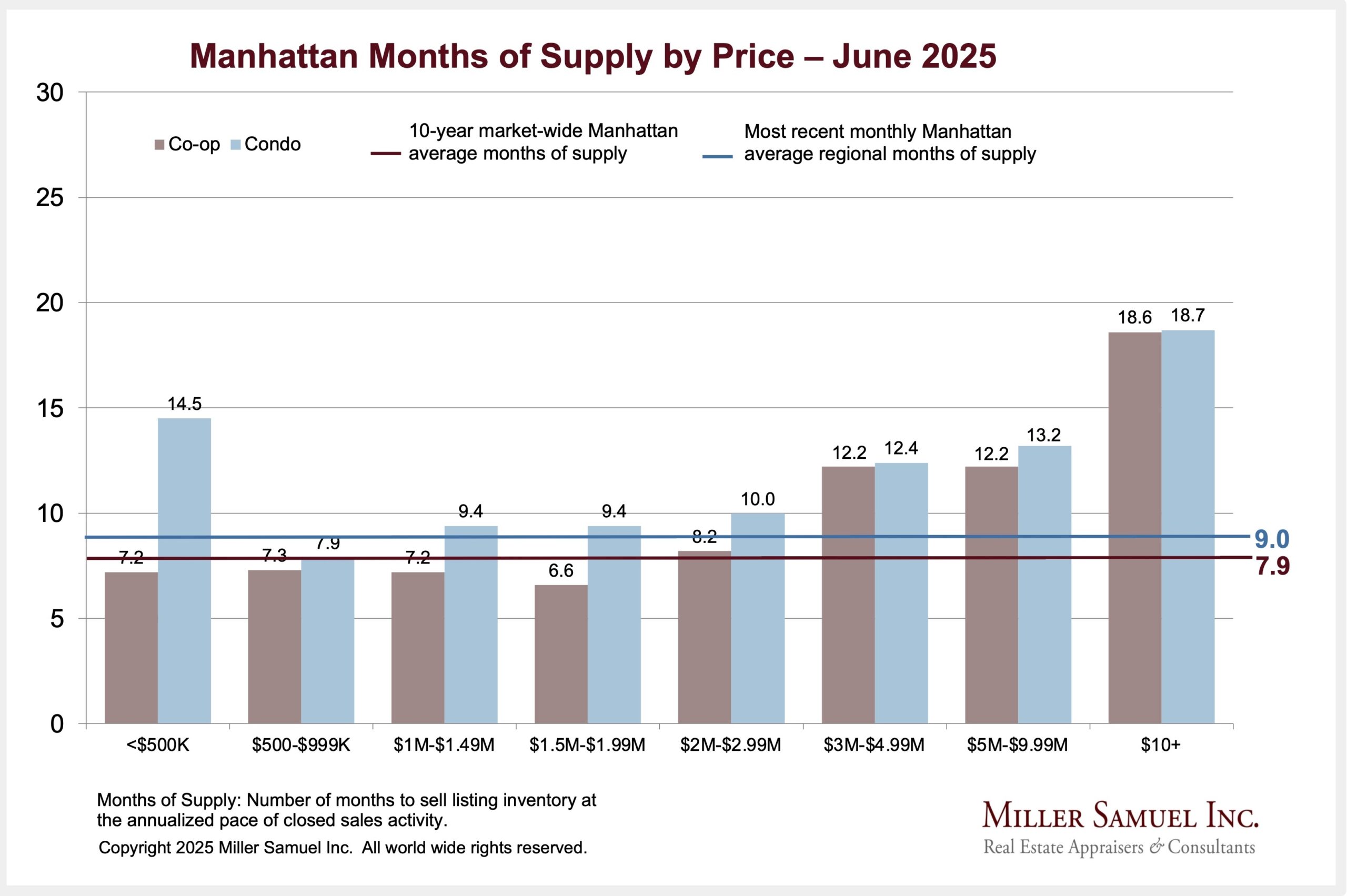One of my sons, many a March ago, asked his brothers, “when is March Madness?” “Err…Now!” they all replied. “It’s March right now!”
In a twist, it’s also tournament time when the maket eliminates the weakest regional banks until only four big ones remain. At least, that is how the sentiment goes. SVB and Signature Banks just lost as regionals and were eliminated. First Republic Bank and Credit Suisse got some help from investors as consumers moved to safety (and the next round). I’m in 7th place in my tournament pool, ahead of my sons and my college roommate, so it’s been a good day. Like the banking system, I’m taking it day by day.
But I digress…
SVB Gets Unmade By Panic, Yet The Banking Crisis Seems Contained, For Now
SVB management appeared quite inept, keeping the massive inflow of cash from start-ups and investors in U.S. securities that, on one hand, gave them the appearance of safe but made them illiquid, keeping the bank from accessing them to cover withdrawals when the panic started. The panic began when the bank proposed raising money to cover the spread and didn’t provide many real facts, just platitudes with a “trust us” sales pitch. VCs were spoked and told all their startups to pull everything out immediately, causing a run. On Thursday, all SVB employees got their bonuses early, and they were shut down by Friday.
This concern was heightened as other regional banks became guilty by association, given the 2018 repeal of a portion of Dodd-Frank that reduced certain requirements of this bank genre. And this isn’t a bailout as the FDIC insurance fund of $127 billion from bank fees is paying for it and SVB (and Signature) have very good assets, unlike the 2008 Washington Mutual collapse.
I’ll get to the impact on the housing further on in these Housing Notes but for this topic and others in the future, I’ve created a link category down at the bottom called “That One Big Thing” with more than two dozen links on the SVB topic. I’ll use it for situations that jump out at us in a sudden event that are relevant to the housing market.
The Housing Market’s Ultimate Impact From SVB (Seems To Be): Lower Mortgage Rates And Tighter Credit
For the past year, I’ve been saying that only a significant adverse event, like a recession, could deter the fed from continuing its rapid rate ascent strategy. The key issue pushing this policy forward has been unusually low unemployment, the lowest in decades. Who on earth would want to see a recession (it could cause substantial job loss) to see lower mortgage rates? Consumers wouldn’t think about purchasing homes if most were worried about keeping their jobs. And I’m not saying a recession is out of the question.
UPDATE – I forgot to add the following tweets when this post went live:
Such a milestone! https://t.co/fK714MNBke
— Jonathan Miller (@jonathanmiller) March 13, 2023
Former Rep. Barney Frank (D-MA) endorsed changes to his own Dodd-Frank law in 2018 that freed mid-sized banks from undergoing stress tests. He sits on Signature Bank's board, which just collapsed.
I reached him via phone tonight and he declined to comment https://t.co/JY77rtNkHt
— Joseph Zeballos-Roig (@josephzeballos) March 13, 2023
When SVB collapsed, mortgage rates dropped a bit. Yet mortgage rates are double year-ago levels but could fall more as consumers clasp their hands together, fretting about a bank contagion. For the record, the quick rescue of First Republic by large banks gives me hope that the contagion won’t happen. The same thinking applies to Credit Suisse.
It’s important to remember this: Congressional lobbying is out of control.
My friend, Barry Ritholtz of Big Picture, advised me when I reached out for tips how best to explain the situation, responded (with the dryest sarcasm on earth): “Explain systemic risk and then forecast what the FOMC will do for the rest of the year.” That’s all. Ha.
Here’s his fascinating discussion with Pete Dominick:
And my friend and appraiser colleague Ryan Lundquist of Sacramento Appraisal Blog created a meme that makes Barry’s point:  :
:
Let’s take it day by day, shall we?
Marketplace: Mortgage rates dip following bank collapse
In this radio spot, I briefly chime in about the outlook of the mortgage market.
And rates dipped a little…
Vague Should Be In Vogue For Housing Market Prognosticators
My friend Sam Ro, of his must-read, must-subscribe substack TKer by Sam Ro shares a few thoughts on the SVB failure. Without revealing the subscriber content (I subscribe), he frames the situation best in his intro:
Over the past week, the world has learned a lot about Silicon Valley Bank (SVB), why it failed, and what the consequences of its failure could be.
For now, I’d still caution against jumping to conclusions on what the ultimate consequences will be.
What actually happens could be worse than what markets are reflecting. It could also be better.
Is that vague enough for you?
Sam is actually providing sage advice for the real estate community. You don’t know what will happen. No one does. Don’t pretend you do, and don’t incite unnecessary panic based on your lack of understanding. Work with what you have and keep it simple and avoid proclamations. Take it day by day.
SVB Cited In Forbes: They Have Some Great Company.
Many stories have been written about stadium naming rights and magazine covers and how it often ends up badly for the subject of the cover story. The takeaway is to avoid the bright shiny lights of headline marketing and stick to the basics.
Forbes Magazine Covers pic.twitter.com/a525xcTbgk
— Kenny Polcari (@KennyPolcari) March 14, 2023
Inflation Is A Global Thing
All that COVID stimulus has created a global monster and a ton of dumb commentary. Now that the Federal Reserve policy is less clear, this provides the scale of the challenge:
Getting Graphic
My favorite housing market/economic charts of the week made by others
Office REITs are in trouble.
Source: @Placer_ai pic.twitter.com/mVFqShDEDR
— (((The Daily Shot))) (@SoberLook) March 15, 2023
My favorite random charts of the week made by others
I didnt need a poll to know the average Swift fan is white, young women who live in the suburbs and vote democratic pic.twitter.com/ZdCE3QJKr6
— Polling USA (@USA_Polling) March 14, 2023
Appraiserville
John Russell On The Future Of Appraising
I’ve had the pleasure of knowing John Russell, Strategic Partnership Officer of the American Society of Appraisers, for quite a while. He has the skill of providing clarity to complex topics. Here’s his discussion with Appraisal Buzz.
Phil Crawford’s Voice of Appraisal Podcast Breaks Down Fannie Mae’s “Value Acceptance” and Questions NAA’s Actual Mission
My friend Phil Crawford gets to the bottom of things in his smooth velvety voice on his must-listen Voice of Appraisal podcast. I have trouble stringing a few sentences together and he makes it look easy.
TAF Chronicles: When You’re Oblivious Of The Problem, You Can’t Solve It
The problem, as said many times here, is the fact that our profession is literally 97.7% white. That’s what needs to be fixed, and the entity that created the current situation, The Appraisal Foundation, or TAF, the organization that wrote the bat-shit crazy letter, the chickenshit letter and is the subject of an active investigation by HUD on whether USPAP promotes a lack of diversity in the appraisal profession (BLS: 97.7% of appraisers are white). I wonder if EY is aware that one of its partners is the current Chairman of TAF’s Board of Trustees?
So it’s quite rich to see TAF’s Chair of the Appraisal Standards Board provide excuses in this Realtor Magazine piece; “Addressing Bias In Appraisal Standards.”
Remember that all board chairs are selected by Dave, and as Friends of Dave (FODs) are not supposed to “rock the boat.”
This is a stall.
The entity creating this 97.7% condition within the appraisal profession through their standards is now stalling for time, hoping that PAVE will go away after the 2024 election if the current administration does not return. By doing nothing, they are placing appraisers at greater risk.
Many people have told me Dave has called this 97.7% issue a nothingburger. TAF’s defense has been that racial bias is a brand new issue that sprung out of nowhere circa 2020 and takes a lot of time to resolve. Societal standards have been evolving since 1987, Dave.
TAF is doing nothing in response other than creating a list of empty achievements since the release of the PAVE report from a year ago. Their CARE council, for example, is a complete waste of time and is well outside the scope of their mission. This laissez-fare attitude damages the public trust further and incentivizes or provides an opportunity, such as Fannie Mae and their obvious efforts to eliminate appraisers. #iloveappraisalwaivers
What’s even more mind-boggling is that TAF is celebrating the one-year anniversary since the PAVE report came out, hiding behind their legal counsel. I previously dubbed TAF’s law firm “Preeminent Relman & Colfax” for the actual firm name because Dave overused “preeminent” to describe them in his monthly newsletter to sell that he was doing something about diversity. Incidentally, I still have to rely on people sharing TAF’s releases with me (sorry, Frank!).
TAF released the following and is not embarrassed about what it represents. It’s been a year. The USPAP fix should be measured in months, not years. C’mon TAF.
C’mon HUD!
OFT (One Final Thought)
I’ve listened to this band for about 50 years but had no idea they were from Ireland (I thought they were from England) until today. Thank you, Twitter trends. Since this is St. Patrick’s Day and I am about 25% Irish…
Thin Lizzy the Bhoys are back in town🍀 pic.twitter.com/DdNOpoljU6
— OwenieBhoy67☘☘🇮🇪🇮🇪🇯🇵🇯🇵 (@B67Owenie) March 4, 2023
…And one more thought. I would be remiss without mentioning “Pi” day on 3.14 this week because of the simple fact that pie is clearly better than cake (Not the band, CAKE, which is the best).
— Justin Elze (@HackingLZ) March 14, 2023
Brilliant Idea #1
If you need something rock solid in your life (particularly on Friday afternoons) and someone forwarded this to you, or you think you already subscribed, sign up here for these weekly Housing Notes. And be sure to share with a friend or colleague if you enjoy them because:
– They’ll be more Madness;
– You’ll realize its March;
– And I’ll listen to Thin Lizzy/CAKE while eating pie.
Brilliant Idea #2
You’re obviously full of insights and ideas as a reader of Housing Notes. I appreciate every email I receive, and it helps me craft the following week’s Housing Note.
See you next week.
Jonathan J. Miller, CRE, Member of RAC
President/CEO
Miller Samuel Inc.
Real Estate Appraisers & Consultants
Matrix Blog
@jonathanmiller
Reads, Listens and Visuals I Enjoyed
- In New York’s Fight to Legalize Basement Apartments, What About Cellars?
- Awash in Asphalt, Cities Rethink Their Parking Needs [NY Times]
- The cost of loneliness: Social isolation holds back workers and costs employers billions [Marketplace]
- What Do US Growth Zones Have in Common? They Build Housing [Bloomberg]
- What Bank Troubles Mean for Your Mortgage [Wall Street Journal]
- Owners Of 15 Central Park West Retail Face Foreclosure On $125M Loan [Bisnow]
- Darien, Connecticut, Bought an Island [Curbed]
- How Much A $100,000 Salary Is Actually Worth Across America [Bloomberg]
- In New York City, a $100,000 Salary Feels Like $36,000 [Bloomberg]
- Moving During the Pandemic: Mass Exodus or Mass Inertia? [JCHS Harvard]
- Is Your Apartment Breaking because Your Landlord Is Broke? [Liberty Street Economics]
- Three Million U.S. Households Making Over $150,000 Are Still Renters [Wall Street Journal]
My New Content, Research and Mentions
- Mortgage rates dip following bank collapse [Marketplace]
- Corinthian Capital Flips Fort Lauderdale Rentals to Tavistock [The Real Deal]
- Mets Outfielder Brandon Nimmo Buys Long Island Home for $5M [The Real Deal]
- How do high carrying costs lower the sales prices of a co-op or condo? Is there a formula to figure this out? [Brick Underground]
- Douglas Elliman report reveals Queens’ average, median rent prices rise to the highest on record [QNS.com]
- Apartment Leases Surge in Manhattan, Rents Level Off [GlobeSt]
Recently Published Elliman Market Reports
- Elliman Report: Manhattan, Brooklyn & Queens Rentals 2-2023 [Miller Samuel]
- Elliman Report: Colorado New Signed Contracts 2-2023 [Miller Samuel]
- Elliman Report: California New Signed Contracts 2-2023 [Miller Samuel]
- Elliman Report: Normandy Isles/Normandy Shores New Signed Contracts 2-2023 [Miller Samuel]
- Elliman Report: Florida New Signed Contracts 2-2023 [Miller Samuel]
- Elliman Report: New York New Signed Contracts 2-2023 [Miller Samuel]
- Elliman Report: Manhattan, Brooklyn & Queens Rentals 1-2023 [Miller Samuel]
- Elliman Report: Hamptons/North Fork Decade 2013-2022 [Miller Samuel]
- Elliman Report: Long Island Decade 2013-2022 [Miller Samuel]
- Elliman Report: Manhattan Townhouse 2013-2022 [Miller Samuel]
That One Big Thing
- The 72-hour scramble to save the United States from a banking crisis [Washington Post]
- Discussing Bank Contagion with Pete Dominick – The Big Picture [Ritholtz]
- First Republic for sale, maybe. Won't be first time. [The Basis Point]
- SVB Is the ‘Nail in the Coffin’ of Bay Area Housing Market’s Gold Rush [Bloomberg]
- What’s Going on With First Republic Bank? [Wall Street Journal]
- Reinforcing Confidence in First Republic Bank [First Republic Bank]
- Panic Gives Way To An Uneasy Calm In New York Real Estate After Signature Collapse [Bisnow]
- First Republic Scores $30B in Deposits From 11 Banks [The Real Deal]
- New York’s Third-Biggest Commercial Real Estate Lender Shut Down By Regulators [Bisnow]
- All the Things We Do Not Know About SVB – The Big Picture [Ritholtz]
- European regulators criticise US ‘incompetence’ over Silicon Valley Bank collapse [Financial Times]
- Collapse of Silicon Valley Bank, Signature Bank Calls Fed Interest Rate Path Into Question [Wall Street Journal]
- Exclusive: Union Square Ventures warned startup founders in November to diversify their deposit holdings after alarm over Silicon Valley Bank [Business Insider]
- Wall Street’s Old Guard Swoops In to Fix a Fresh Banking Mess [Bloomberg]
- Analysis: Why Silicon Valley Bank and Signature Bank failed so fast [PBS]
- Signature Bank Faced Criminal Probe Ahead of Firm’s Collapse [Bloomberg]
- How Washington Decided to Rescue Silicon Valley Bank [NY Times]
- The End of Silicon Valley Bank—And a Silicon Valley Myth [The Atlantic]
- Justice Dept. investigating Silicon Valley Bank collapse [Washington Post]
- U.S. Is Said to Open Investigation Into Silicon Valley Bank Collapse [NY Times]
- ‘Old-School’ Signature Bank Collapsed After Its Big Crypto Leap [Bloomberg]
- Silicon Valley Bank's fatal communications flaw [Axios]
- Barney Frank, a co-author of key banking legislation, was on the board of one of the failed banks. [NY Times]
- Almost Daily Grant's Commentary [Grants Pub]
- Joint Statement by Treasury, Federal Reserve, and FDIC [Federal Reserve Bank]
- First Republic Gets Additional Funding From Fed, JPMorgan [Wall Street Journal]
Appraisal Related Reads
- Addressing Bias in Appraisal Standards [NAR]
- Speed Regardless of Accuracy Under the Banner of Modernization [Appraisers Blogs]
- The Future of the Appraisal Industry with John Russell [Appraisal Buzz]
- Real estate price cycles & getting bid up [Sacramento Appraisal Blog]
Extra Curricular Reads
- How One Guy’s Car Blog Became a $1 Billion Marketplace [Wall Street Journal]
- What CEOs Are Getting Wrong About the Future of Work—and How to Make It Right [Wall Street Journal]
- A railroad fan photographed Putin’s armored train. Now he lives in exile. [Washington Post]
- The odds of a perfect March Madness bracket: 1 in 9.2 quintillion [Axios]
- A Photo Tour of the Buried Houses of Mammoth Lakes, CA [SnowBrains]
- Meg White Is The 21st Century's Loudest Introvert [NPR]
- Bird deaths down 70 percent after painting wind turbine blades [Arstechnica]
- 10 Old-Fashioned Candy Stores in NYC [Untapped New York]

















![[Podcast] Episode 4: What It Means With Jonathan Miller](https://millersamuel.com/files/2025/04/WhatItMeans.jpeg)